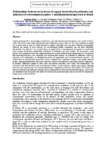Use este identificador para citar ou linkar para este item:
http://www.alice.cnptia.embrapa.br/alice/handle/doc/1015781Registro completo de metadados
| Campo DC | Valor | Idioma |
|---|---|---|
| dc.contributor.author | BELLON, S. | pt_BR |
| dc.contributor.author | ABREU, L. S. de | pt_BR |
| dc.contributor.author | VALARINI, P. J. | pt_BR |
| dc.date.accessioned | 2015-05-20T11:11:11Z | pt_BR |
| dc.date.available | 2015-05-20T11:11:11Z | pt_BR |
| dc.date.created | 2015-05-20 | pt_BR |
| dc.date.issued | 2005 | pt_BR |
| dc.identifier.citation | In: INTERNATIONAL SOCIETY OF ORGANIC AGRICULTURE RESEARCH, 15., 2005, Adelaide, Austrália. Shaping sustainable systems: proceedings. Adelaide, Austrália: IFOAM, 2005. | pt_BR |
| dc.identifier.uri | http://www.alice.cnptia.embrapa.br/alice/handle/doc/1015781 | pt_BR |
| dc.description | Organic farming (OF) is increasingly considered as a possible alternative for designing a "new rural" in Brazil, where OF covers a wide range of production and certification systems. However, the ways small farmers adopt OF in green belts to meet an urban demand in organic vegetables have not been extensively investigated. Likewise, the impact of such practices on environmental quality components has not been sufficiently documented. Our objective was to relate forms of organisation to environmental assessment in a watershed where organic horticulture significantly contributes to landscape and water quality. We showed how small farmers were organised or how they organised themselves to meet urban demands and develop OF. We assumed that associated practices were consistent with environmental impacts, as evaluated by indicators. Based on interviews with stakeholders, we identified four forms of organisation and associated farmers' practices. We related them to environmental assessment in three compartments: landscape ecology, water quality and soil quality. Although organisations share some objectives, namely with regard to visual quality and the "right price" of products, differences appear in their scope and internal operation, their values and relationships with consumers, and their technical and environmental contents. As for technical content, input supply, planning processes and crop diversity vary among organisations, ranging from liberal to hierarchical. Our results also showed similarities and differences among various organisations in terms of environmental impact. Such results are interpreted and discussed in the light of technical and social dimensions that account for the progressive design of new systems in Brazil. | pt_BR |
| dc.language.iso | eng | eng |
| dc.rights | openAccess | eng |
| dc.subject | Small-scale horticultural organics | pt_BR |
| dc.subject | Forms of organisation | pt_BR |
| dc.title | Relationships between social forms of organic horticultural production and indicators of environmental quality: a multidimensional approach in Brazil. | pt_BR |
| dc.type | Artigo em anais e proceedings | pt_BR |
| dc.date.updated | 2015-07-29T11:11:11Z | pt_BR |
| dc.subject.thesagro | Horticultura | pt_BR |
| dc.subject.thesagro | Agricultura orgânica | pt_BR |
| dc.subject.nalthesaurus | Horticulture | pt_BR |
| dc.subject.nalthesaurus | Organic production | pt_BR |
| dc.format.extent2 | págs. 430-433 | pt_BR |
| riaa.ainfo.id | 1015781 | pt_BR |
| riaa.ainfo.lastupdate | 2015-07-29 | pt_BR |
| dc.contributor.institution | S. Bellon, INRA/Avignon; LUCIMAR SANTIAGO DE ABREU, CNPMA; P. J. Valarini, Embrapa Meio Ambiente. | pt_BR |
| Aparece nas coleções: | Artigo em anais de congresso (CNPMA)  | |
Arquivos associados a este item:
| Arquivo | Descrição | Tamanho | Formato | |
|---|---|---|---|---|
| 2005AA013.pdf | 181.86 kB | Adobe PDF |  Visualizar/Abrir |









